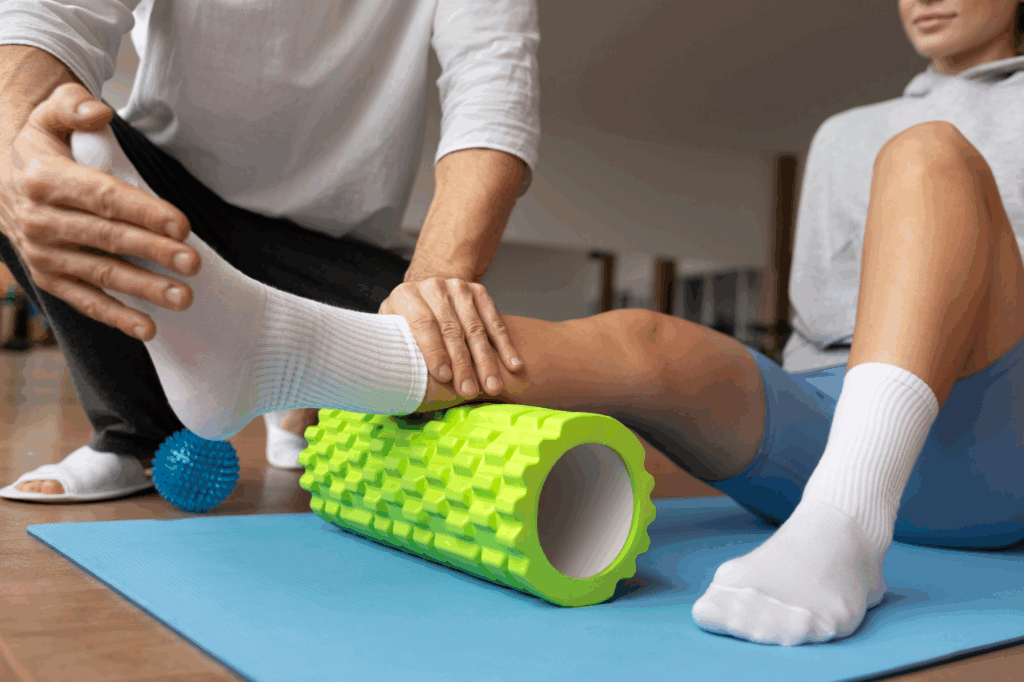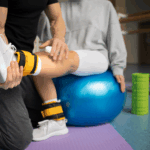Patients with arthritis in Miami and worldwide face a truck-sized dilemma: moving hurts, but not moving makes things worse. I can assure you that proper exercise is like finding the master key that opens the door to a better quality of life. That unwanted guest that settles in the joints and seems determined to move in permanently, affects almost a quarter of the adult population in areas like Miami, where humidity sometimes plays nasty tricks on inflamed joints.
Understanding Arthritis from the Root of the Problem
this injury isn’t a catch-all drawer where we toss any joint pain. This condition involves specific inflammation that, like a problematic tenant, refuses to leave without causing damage. In Miami, where many patients combine conventional treatments with holistic alternatives, we observe a growing trend toward integrative approaches. Corticosteroids remain the kings of the hill for controlling acute flare-ups, but prescribed exercise represents our best long-term strategy.
The Fundamental Role of Controlled Movement
I remember Elena, a 62-year-old patient who came to my office in Miami almost dragging her feet. “Doctor, it hurts even to breathe,” she told me with glassy eyes. Six months after following a personalized exercise program for her arthritis, she walked in standing tall with a smile worth more than a thousand words. The secret wasn’t pumping her full of medication, but finding the perfect balance between rest and movement adapted to her condition.
Aquatic Exercises: The Golden Ally Against Arthritis
In Miami, we have a football field-sized advantage: pools everywhere. Hydrotherapy is like arm-wrestling arthritis with all the winning cards. Water buoyancy reduces joint impact by up to 90% while performing movements that would be unthinkable on dry land. I recommend aquatic exercises three times a week, taking advantage of the climate that allows us to enjoy outdoor activities practically year-round.
Therapeutic Swimming for Compromised Joints
When we talk about arthritis and water exercise, swimming takes the cake. A study conducted with this injury patients in Miami showed significant improvements after twelve weeks of adapted swimming. Backstroke is especially beneficial for knee problems, while modified freestyle works wonders for affected shoulders. The key is maintaining a sustainable rhythm – we’re not preparing Olympic swimmers, but seeking movement without pain.
Low-Impact Exercises: The Daily Bread and Butter
The stationary bike is more real than taxes for my arthritis patients in Miami. This exercise allows lubricating the joints without subjecting them to traumatic impacts. Starting with 10-minute sessions and gradually adding until reaching 30-40 minutes can make an abysmal difference. Many sports centers in Miami offer specific programs for people with this injury, where trainers understand that each patient needs particular adjustments.
Strategic Walks: Neither Too Fast Nor Too Slow
If putting your foot in your mouth were a sport, many would excel when starting a walking program without supervision. I recommend starting on flat surfaces like boardwalks or well-maintained parks. Proper footwear is non-negotiable – it’s like trying to write with a broken pencil if we use inadequate shoes. Progression should be gradual, increasing time before speed or distance.
Muscle Strengthening: Protecting the Joints
I once had a patient in Miami who told me: “Doc, I thought lifting weights was like pouring gasoline on the fire of my this injury.” Nothing could be further from the truth. Proper strength training creates a protective shield around affected joints. Resistance bands are particularly useful for starting this process without overloading structures already compromised by this injury.
Isometric Exercises: Tension Without Movement
For days when arthritis is particularly rebellious, isometric exercises are the sensible option. These involve contracting muscles without moving joints, like when pressing palms together. In my Miami clinic, we teach specific sequences that can be performed even during a painful this injury flare-up, thus maintaining a certain level of activity without exacerbating symptoms.

Flexibility and Range of Motion: Regaining Freedom
this injury is like that annoying aunt who comes to visit and ends up controlling the whole house. Little by little, it limits what you can do and where you can move. Flexibility exercises counteract this tyrannical tendency. In Miami’s warm climate, it’s easier to keep joints lubricated, but it still requires daily and consistent work.
Gentle Stretching: The Art of Not Forcing
I vividly remember when Carlos, a 58-year-old construction worker with severe arthritis, told me in frustration: “I tried to touch my toes and almost ended up in the emergency room.” This is a colossal mistake that drives anyone with this injury crazy. Stretches should be gradual, sustained, and never painful. In Miami, I recommend doing them after a hot shower or using heat packs beforehand.
Adapted Yoga and Tai Chi: Body-Mind Balance
In Miami, we have excellent instructors specialized in adapting disciplines like yoga for people with arthritis. The focus isn’t on contorting like a pretzel, but finding postures that gently expand current limitations. These practices not only improve physical mobility but help manage chronic pain associated with this injury through breathing techniques and mindfulness.
Customized Sequences for Each Type of Arthritis
Rheumatoid arthritis requires different approaches than osteoarthritis, something as obvious as water being wet but that many overlook. In my Miami practice, we design specific sequences according to the type of this injury, affected joints, and disease phase. The same posture can be therapeutic for someone and problematic for another, so personalization isn’t a luxury but a basic necessity.
Adapted Equipment: Technology at the Service of Movement
Advances in ergonomic equipment have revolutionized options available for people with this injury in Miami. From recumbent bicycles to adjustable resistance machines, these tools allow challenging the body without overwhelming damaged joints. The initial investment may seem considerable, but when we see the results in terms of autonomy and pain reduction, it’s more economical than many prolonged pharmacological treatments.
Assistive Devices: When Less Is More
Sometimes, the best exercise for someone with this injury in Miami is simply being able to perform daily activities without assistance. Well-selected ergonomic devices can make a substantial difference. I had a patient who, after using adapted utensils in her occupational therapy exercises, was able to cook her traditional dishes again, regaining not only mobility but a significant part of her cultural identity.
Conclusion: Personalized Movement as Daily Medicine
Scientific evidence supports what we see day after day in clinical practice: appropriate exercise is potent medicine against this injury. Here in Miami, where the sun shines generously, we take advantage of this natural ally by combining it with structured physical activity programs. The key isn’t following passing fads but finding those movements that, like a tailored suit, perfectly fit each particular case of this injury.
Therefore, if you live with this injury in Miami or anywhere else, remember that every step counts, every movement adds up, and consistency far exceeds intensity. As we say in traumatology jargon: “a joint that doesn’t move gets stuck.” So put yourself in the hands of professionals and discover how proper movement can become your best ally against this injury.
Exercises Recommended by Traumatologists for People with Arthritis
Patients with this injury in Miami and worldwide face a truck-sized dilemma: moving hurts, but not moving makes things worse. As a traumatologist with two decades treating cases in sunny Miami, I can assure you that proper exercise is like finding the master key that opens the door to a better quality of life. This injury, that unwanted guest that settles in the joints and seems determined to move in permanently, affects almost a quarter of the adult population in areas like Miami, where humidity sometimes plays nasty tricks on inflamed joints.
Understanding Arthritis from the Root of the Problem
Arthritis isn’t a catch-all drawer where we toss any joint pain. This condition involves specific inflammation that, like a problematic tenant, refuses to leave without causing damage. In Miami, where many patients combine conventional treatments with holistic alternatives, we observe a growing trend toward integrative approaches. Corticosteroids remain the kings of the hill for controlling acute flare-ups, but prescribed exercise represents our best long-term strategy.
The Fundamental Role of Controlled Movement
I remember Elena, a 62-year-old patient who came to my office in Miami almost dragging her feet. “Doctor, it hurts even to breathe,” she told me with glassy eyes. Six months after following a personalized exercise program for her this injury, she walked in standing tall with a smile worth more than a thousand words. The secret wasn’t pumping her full of medication, but finding the perfect balance between rest and movement adapted to her condition.
Aquatic Exercises: The Golden Ally Against Arthritis
In Miami, we have a football field-sized advantage: pools everywhere. Hydrotherapy is like arm-wrestling this injury with all the winning cards. Water buoyancy reduces joint impact by up to 90% while performing movements that would be unthinkable on dry land. For my arthritis patients in Miami, I recommend aquatic exercises three times a week, taking advantage of the climate that allows us to enjoy outdoor activities practically year-round.
Therapeutic Swimming for Compromised Joints
When we talk about this injury and water exercise, swimming takes the cake. A study conducted this injury patients in Miami showed significant improvements after twelve weeks of adapted swimming. Backstroke is especially beneficial for knee problems, while modified freestyle works wonders for affected shoulders. The key is maintaining a sustainable rhythm – we’re not preparing Olympic swimmers, but seeking movement without pain.
Low-Impact Exercises: The Daily Bread and Butter
The stationary bike is more real than taxes for my arthritis patients in Miami. This exercise allows lubricating the joints without subjecting them to traumatic impacts. Starting with 10-minute sessions and gradually adding until reaching 30-40 minutes can make an abysmal difference. Many sports centers in Miami offer specific programs for people this injury, where trainers understand that each patient needs particular adjustments.
Strategic Walks: Neither Too Fast Nor Too Slow
If putting your foot in your mouth were a sport, many would excel when starting a walking program without supervision. For people with this injury in Miami, I recommend starting on flat surfaces like boardwalks or well-maintained parks. Proper footwear is non-negotiable – it’s like trying to write with a broken pencil if we use inadequate shoes. Progression should be gradual, increasing time before speed or distance.
Muscle Strengthening: Protecting the Joints
I once had a patient in Miami who told me: “Doc, I thought lifting weights was like pouring gasoline on the fire of my arthritis.” Nothing could be further from the truth. Proper strength training creates a protective shield around affected joints. Resistance bands are particularly useful for starting this process without overloading structures already compromised by this injury.
Isometric Exercises: Tension Without Movement
For days when this injury is particularly rebellious, isometric exercises are the sensible option. These involve contracting muscles without moving joints, like when pressing palms together. We teach specific sequences that can be performed even during a painful arthritis flare-up, thus maintaining a certain level of activity without exacerbating symptoms.
Flexibility and Range of Motion: Regaining Freedom
this injury is like that annoying aunt who comes to visit and ends up controlling the whole house. Little by little, it limits what you can do and where you can move. Flexibility exercises counteract this tyrannical tendency. In Miami’s warm climate, it’s easier to keep joints lubricated, but it still requires daily and consistent work.
Gentle Stretching: The Art of Not Forcing
I vividly remember when Carlos, a 58-year-old construction worker with severe arthritis, told me in frustration: “I tried to touch my toes and almost ended up in the emergency room.” This is a colossal mistake that drives anyone with this injury crazy. Stretches should be gradual, sustained, and never painful. I recommend doing them after a hot shower or using heat packs beforehand.
Adapted Yoga and Tai Chi: Body-Mind Balance
We have excellent instructors specialized in adapting disciplines like yoga for people with arthritis. The focus isn’t on contorting like a pretzel, but finding postures that gently expand current limitations. These practices not only improve physical mobility but help manage chronic pain associated with this injury through breathing techniques and mindfulness.
Customized Sequences for Each Type of Arthritis
Rheumatoid arthritis requires different approaches than osteoarthritis, something as obvious as water being wet but that many overlook. We design specific sequences according to the type of this injury, affected joints, and disease phase. The same posture can be therapeutic for someone and problematic for another, so personalization isn’t a luxury but a basic necessity.
Adapted Equipment: Technology at the Service of Movement
Advances in ergonomic equipment have revolutionized options available for people with this injury. From recumbent bicycles to adjustable resistance machines, these tools allow challenging the body without overwhelming damaged joints. The initial investment may seem considerable, but when we see the results in terms of autonomy and pain reduction, it’s more economical than many prolonged pharmacological treatments.
Assistive Devices: When Less Is More
Sometimes, the best exercise for someone with this injury is simply being able to perform daily activities without assistance. Well-selected ergonomic devices can make a substantial difference. I had a patient who, after using adapted utensils in her occupational therapy exercises, was able to cook her traditional dishes again, regaining not only mobility but a significant part of her cultural identity.
Conclusion: Personalized Movement as Daily Medicine
Scientific evidence supports what we see day after day in clinical practice: appropriate exercise is potent medicine against this injury. Where the sun shines generously, we take advantage of this natural ally by combining it with structured physical activity programs. The key isn’t following passing fads but finding those movements that, like a tailored suit, perfectly fit each particular case of this injury.
Therefore, if you live with this injury in Miami or anywhere else, remember that every step counts, every movement adds up, and consistency far exceeds intensity. As we say in traumatology jargon: “a joint that doesn’t move gets stuck.” So put yourself in the hands of professionals and discover how proper movement can become your best ally against this injury.






